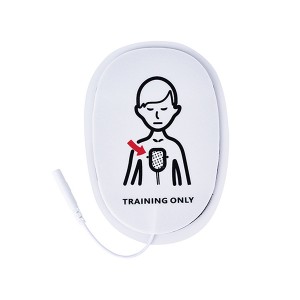
Products
Disposable Defibrillation Electrodes Adult Child AED Electrodes
Product Video
Product Specification
| Product Type | AED Training Electrode Pad |
| Model Number |
QD-AED-A01/PH
|
| Sizes | 93x132mm |
| Backing | Foam |
| Gel | Defibrillator gel |
| Liner | PET paper printed with instruction |
| Color | White |
| Cable | Soft PVC with Plug |
| Label | Stick on the cable and outer bag |
| Packing | 1set in an aluminum foil bag |
| Report | ROHS/Biocompatibility report |
| Certificate | CE/ISO/FDA |
Product Advantage
√ The conductive gel on defibrillation electrodes provides better coupling and enhanced defibrillation while adhering stably to the skin to prevent burns caused by current overload. Defibrillation electrodes use pulsed electrical currents applied to the heart to administer electric shock therapy to eliminate heart rate arrhythmias and restore the heart to sinus rhythm for extracorporeal defibrillation, resuscitation, monitoring and pacing. Compared with traditional defibrillation accessories, it can free the operator’s range of motion, and it has the advantages of high efficiency of rescue and treatment, fast action, and easy operation.
Product Detail
√ Peel the pads off of the backing.
√ Place one pad on the right side of the chest, on the area just below the collarbone.
√ Place the other pad on the lower left side of the chest, underneath the armpit area.
√ Connect the pads to the AED. Some pads are already pre-connected to the device.
Product Function
> The conductive gel on defibrillation electrodes provides better coupling and enhanced defibrillation while adhering stably to the skin to prevent burns caused by current overload. Defibrillation electrodes use pulsed electrical currents applied to the heart to administer electric shock therapy to eliminate heart rate arrhythmias and restore the heart to sinus rhythm for extracorporeal defibrillation, resuscitation, monitoring and pacing. Compared with traditional defibrillation accessories, it can free the operator’s range of motion, and it has the advantages of high efficiency of rescue and treatment, fast action, and easy operation.


















